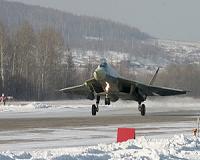| . |  |
. |
Washington DC (SPX) Mar 10, 2010 The Army's new high-tech UH-60 Black Hawk M-model helicopter - equipped with a stronger engine, a digital cockpit and composite rotor blades - performed exceptionally well in Afghanistan during its first major combat deployment, according to a recently completed After Action Review at Fort Campbell, Ky., service officials said. "The M-model Black Hawks were in Afghanistan for 12 months. The aircraft performed exceptionally well," said Lt. Col. Jerry Davis, product manager for UH-60 Modernization. "We got great reaction from pilots. They experienced a higher than average operational readiness rate with those aircraft in theater and they loved the technologies on-board." The year-long deployment was the first for the M-model Black Hawks, which entered full-rate production in June, 2007. So far, 154 M-models have been delivered, Davis said. The M-model Black Hawk's digital cockpit display made a large difference with pilots, the AAR found. "We went from analogue type displays on the dash to multifunction digital displays. Now, the aircraft has a moving map capability with digital situational awareness on the dash integrated with the flight plan. It gave pilots a greater awareness of where their units were, where their supportive units were and where the enemy locations were," Davis said. "It has an integrated Blue Force Tracker which automatically displays situational awareness on the moving map display, giving greater awareness to the pilot conducting the missions." The M--model aircraft is also interoperable with the latest Army Aviation Mission Planning Systems - enabling pilots to plan a mission in their pilot ready room on laptop computers, store data onto a small card and plug it into the aircraft, allowing them to pull up maps, graphic displays and other mission-essential information, Davis said. "The aircraft has a data-transfer system. Once they plug that card in they can pull that data up on those maps and it will display graphics as well as program their radios. You get routes, landing locations, radio frequencies that you need to be on as well as locations of refuel and re-arm points. All of the normal mission planning data that a pilot has can now be done on the Aviation Mission Planning System and transferred electronically to the aircraft itself," Davis added. Also, the combination of wide-chord composite rotor blades and a more powerful engine give the M-model Black Hawk about 500 pounds of additional lift capability compared to previous models, he said. "The UH-60 M comes off the line with the latest GE engine that we are using, the 701D model which has more shaft horsepower. It is a more powerful engine," Davis said. "It is a common engine between the Black Hawk and Apache fleets which is something very good for the aviation logistical community." The existing 701C --commonly used as the standard engine for Black Hawks and Apaches for the last 15 years - has a 1,900 shaft horsepower engine, said Mac Dinning, aircraft survivability team lead, Aviation and Missile Research, Development and Engineering Center. "The 701D engine brings that up to 2,000 shaft horsepower, giving you and extra 100 horsepower. That is a five percent increase," he said.
Share This Article With Planet Earth
Related Links US Army The latest in Military Technology for the 21st century at SpaceWar.com
 Russia And India To Develop Joint 5G-fighter By 2016
Russia And India To Develop Joint 5G-fighter By 2016Moscow (RIA Novosti) Mar 10, 2010 A Russian-Indian fifth-generation fighter jet could be developed by 2015-2016, a Russian defense industry official said on Tuesday. Moscow and New Delhi are expected to sign a contract on a joint development of the new fighter in the near future, focusing on the design concept and technical requirements put forward by India. "I hope that we will be able to build a joint fifth-generat ... read more |
|
| The content herein, unless otherwise known to be public domain, are Copyright 1995-2010 - SpaceDaily. AFP and UPI Wire Stories are copyright Agence France-Presse and United Press International. ESA Portal Reports are copyright European Space Agency. All NASA sourced material is public domain. Additional copyrights may apply in whole or part to other bona fide parties. Advertising does not imply endorsement,agreement or approval of any opinions, statements or information provided by SpaceDaily on any Web page published or hosted by SpaceDaily. Privacy Statement |